
2022 Progress report on the Global Action Plan for Healthy Lives and Well-being for All
Stronger collaboration for an equitable and resilient recovery towards the health-related Sustainable Development Goals – Incentivizing collaboration
SDG3 GAP Progress Report 2022 Banner

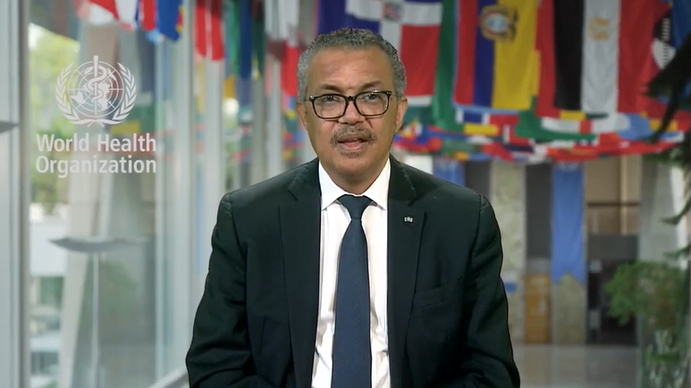
“SDG3 GAP has helped strengthen collaboration on primary health care and other areas in more than 50 countries. But to truly transform how we jointly support countries to get back on track for the SDG health targets will require strong incentives for collaboration”
- Dr Tedros Adhanom Ghebreyesus, Director-General, WHO
2022 progress report on the Global Action Plan for...
As COVID-19 continued to dominate global health over the last year, the direct and indirect impact of the pandemic has led progress against the health-related SDGs to fall even further behind. At the same time, crises such as armed conflict, increasing food insecurity, political and economic instability and the growing impact of climate change threaten to derail recovery from the pandemic.
A key way to respond to and ensure an equitable and resilient recovery from COVID-19 is for multilateral agencies to collaborate even more closely in providing effective and efficient joint support to countries, which is the foundation of the Global Action Plan for Healthy Lives and Well-being for All (SDG3 GAP).
SDG3 GAP is helping to promote synergies among its signatory agencies’ pandemic-specific responses and longer-term work to accelerate progress towards the SDGs by creating an improvement platform for collaboration on health among key actors in the multilateral system.
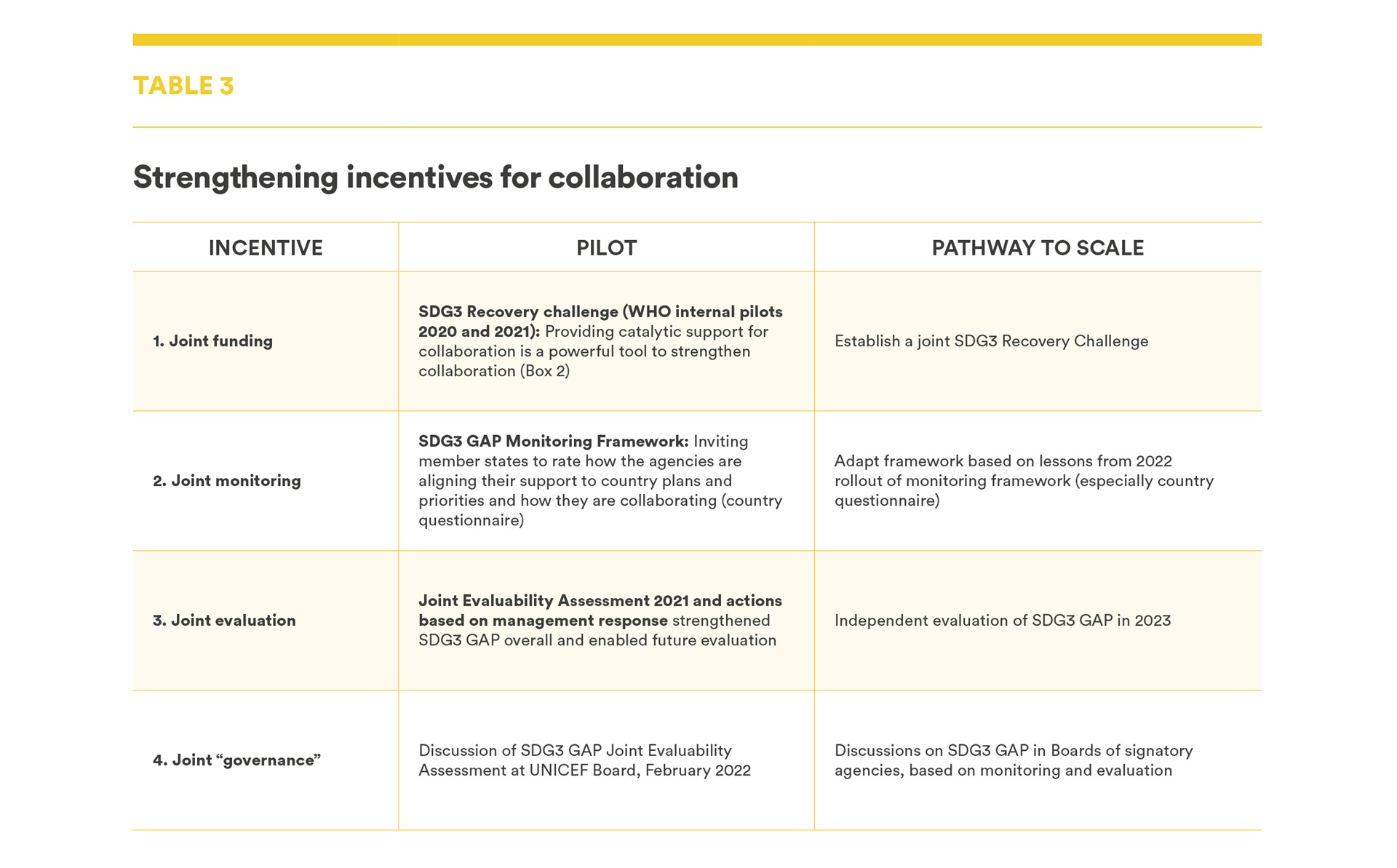
Strengthening incentives for collaboration
Engage
| Action and impact in countries remain central to work under the SDG3 GAP. The number of countries currently engaged has increased from 37 last year to more than 50 and collaboration at country level is deepening, as illustrated by the case
studies in this report and online. A recovery strategy approved by SDG3 GAP Principals in November 2021 and a joint letter from the Principals to country-facing teams in January 2022 have further refined the signatory agencies’ offer to countries and the added value of the SDG3 GAP collaboration.
|
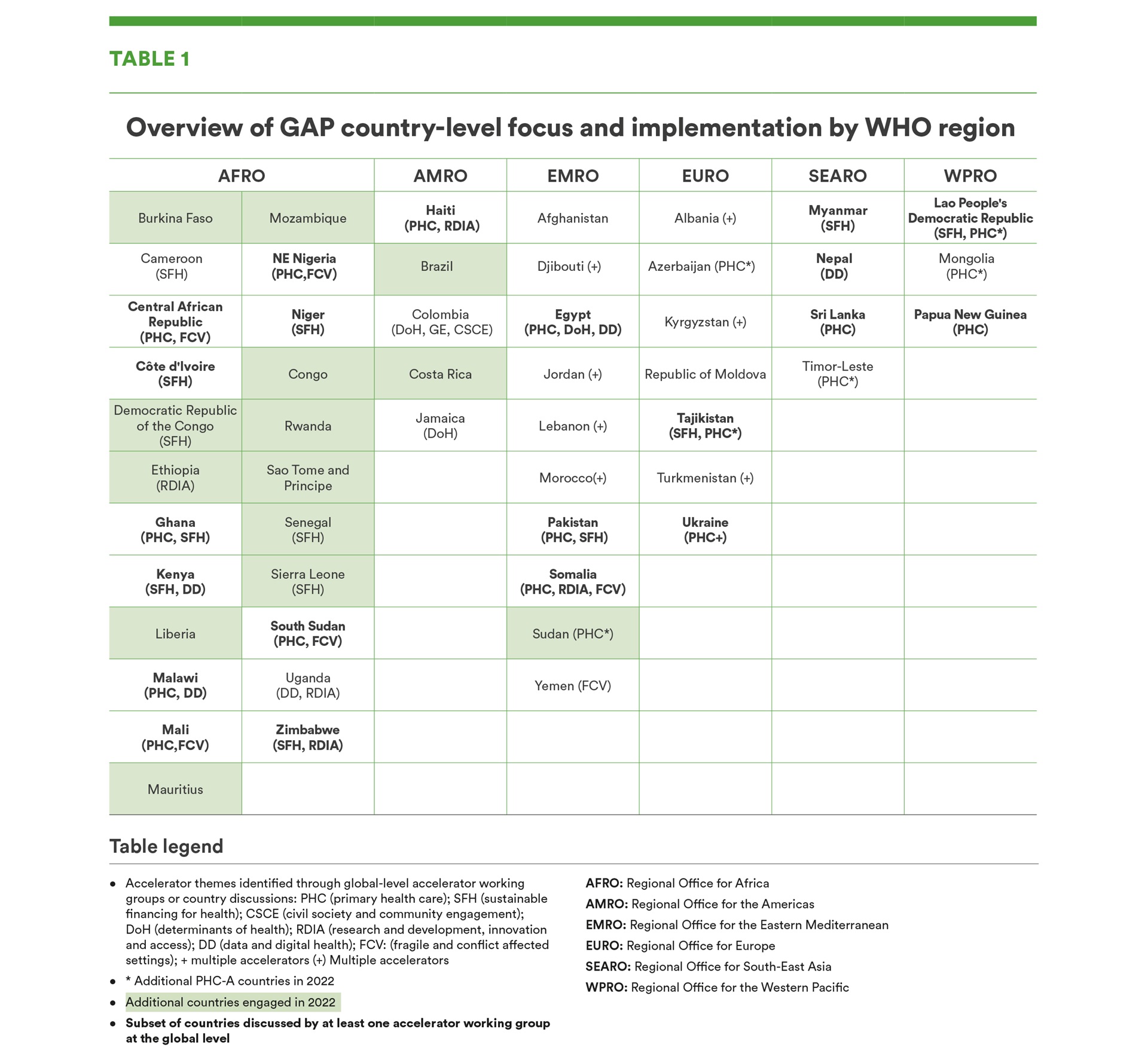
Overview of GAP country-level focus and implementation by WHO region
Country case studies
All →The 11 case studies summarized in the 2022 SDG3 GAP progress report illustrate how the scope of collaboration among the signatory agencies ranges from initial discussions through to deepening collaboration such as joint planning and implementation across accelerator themes.
In Ghana and Pakistan, SDG3 GAP signatory agencies are supporting the governments to realize their vision for universal health coverage by focusing on strengthening primary health care and ensuring sustainable health financing. Work in Azerbaijan, Brazil and Republic of the Congo focuses on strengthening specific aspects of primary care such as the health workforce, mental health services and services for reproductive, maternal, neonatal, child and adolescent health. In Costa Rica and Sri Lanka respectively, the agencies are supporting government efforts to apply lessons from the COVID-19 response to strengthen primary care and to adopt a “PHC as a whole-of-society approach to health” including multisectoral action, empowerment of communities and a focus on primary prevention. In Kenya and Nepal, work on strengthening data and digital health systems aims to achieve more equitable access to primary health care. With support from SDG3 GAP agencies and other partners, Somalia has increased its capacity to integrate and scale up promising innovations in PHC settings with the introduction of an innovative solar-powered oxygen delivery system to address oxygen surge needs for COVID-19 and beyond. And in Niger, work is focused on closer alignment among development partners engaged in health.
Accelerate
| Communities of practice are now well established through the seven SDG3 GAP accelerators and the overarching commitment to gender equality. The accelerator and gender equality working groups remain focused on supporting joint country-level
activities. Work at the country level increasingly spans several accelerator themes, for example on primary health care and sustainable financing, while also helping to strengthen data systems and bring innovation to scale. Alignment among
the accelerators is driven by country priorities and needs. The working groups have also developed several global public goods, including for the response to COVID-19.
Optimizing incentives for collaboration: While communities of practice have been created and are working well around accelerator themes, incentives in the multilateral ecosystem are not optimized for collaboration. A key theme throughout this report is the need to strengthen and optimize these incentives. While maturing as communities of practice, the accelerators must maintain an action-oriented sense of urgency to achieve the SDGs. |
Align
| Alignment of global health initiatives continues to be a critical focus of the SDG3 GAP, and this has intensified due to the COVID-19 pandemic and the need for signatory agencies to use resources efficiently. Notably, work under the SDG3 GAP is further integrated with that of the H6/Every Woman, Every Child and the Health Data Collaborative, and stronger synergies with UHC2030 are being explored. |
Account
| Signatory agencies have responded to the key recommendations in the joint evaluability assessment of the SDG3 GAP undertaken in 2020, setting the scene for an independent evaluation of the SDG3 GAP in 2023. |
Progress on response to SDG3 GAP Joint Evaluability Assessment (JEA)
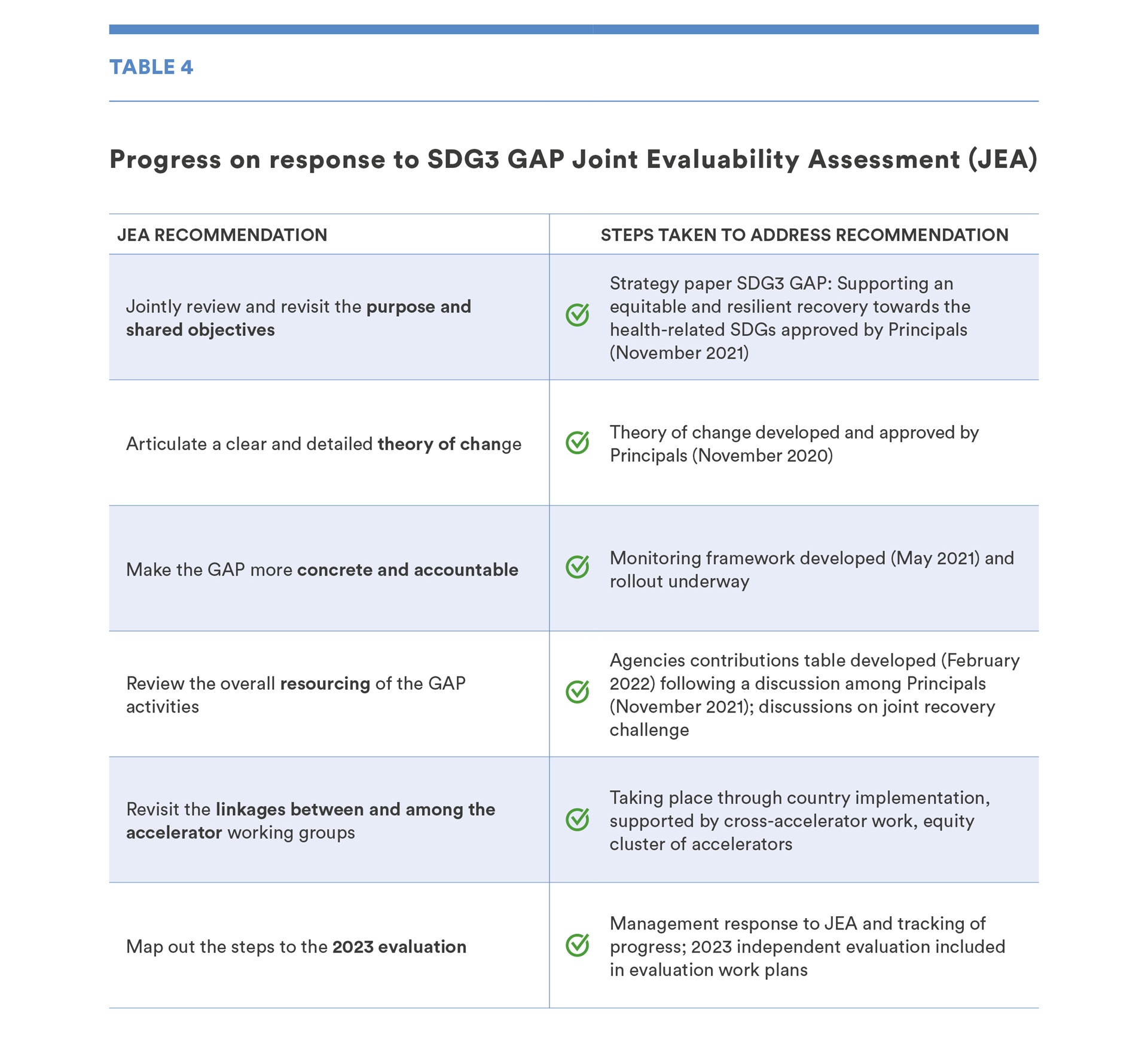
Progress on response to SDG3 GAP Joint Evaluability Assessment (JEA)
In line with recommendation 4 of the joint evaluability assessment, the signatory agencies have identified their respective agencies’ contributions in support of an equitable and resilient recovery from COVID-19. These contributions are summarized in Figure 1. The full contributions table is available here.
SDG3 GAP agencies' contributions for joint recovery strategy
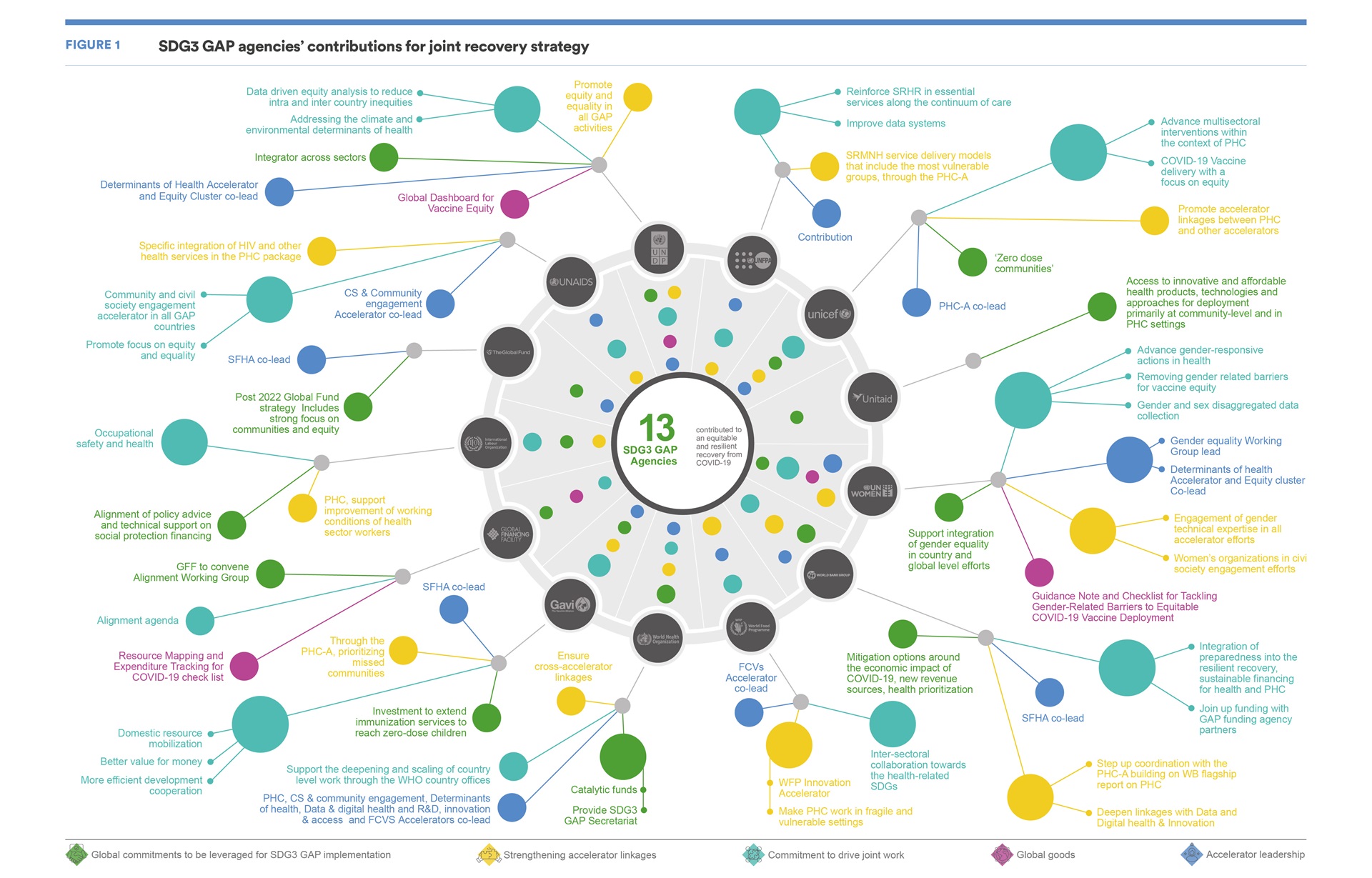
SDG3 GAP Agencies’ contributions for joint recovery strategy
The SDG3 GAP monitoring framework, now being piloted, seeks country perspectives on collaboration among the signatory agencies. Responses from 42 national governments or relevant authorities reflect an overall positive assessment of collaboration among SDG3 GAP agencies but indicate that – especially in low-income countries - more efforts are needed to align with national priorities and strengthen coordination. The responses include many concrete suggestions for improvement and emphasize that coordination should be country driven and that SDG3 GAP should help to strengthen coordination capacities in ministries of health.
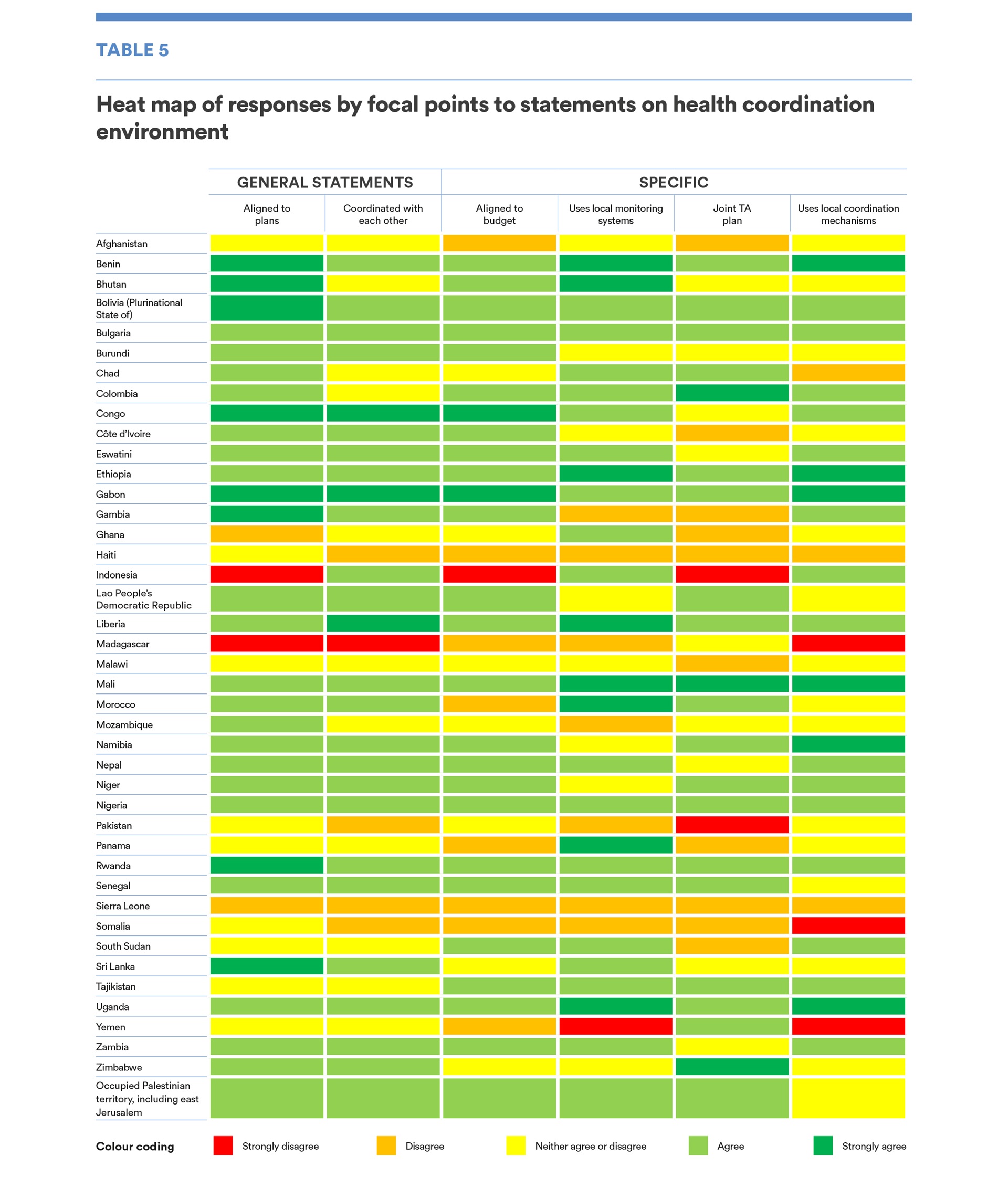
Heat map of responses by focal points to statements on health coordination environment
Collaboration is the path, impact is the destination
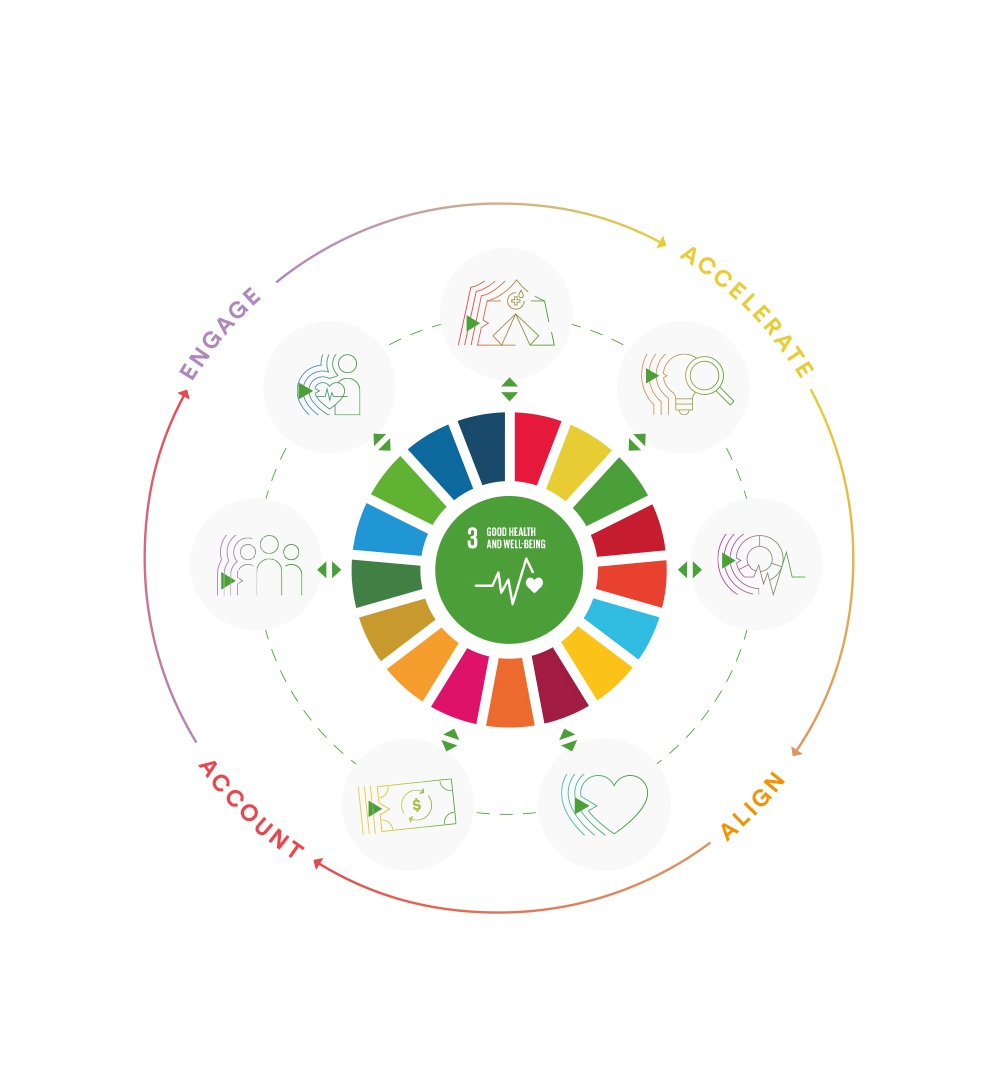
As an improvement platform, SDG3 GAP has addressed to the extent possible the “structure” side of the multilateral ecosystem by building well-functioning communities of practice around accelerator themes in support of country-led plans and aligning these with existing networks and structures. What remains to be fully addressed, but is now being piloted, is the “function” side of the ecosystem: the joint funding, monitoring, evaluation, governance and accountability that is needed to further drive collaboration for impact.
As noted in previous progress reports, incentives are essential to encourage closer collaboration in the global health architecture. In the last year, four areas have been identified as key opportunities to further incentivize collaboration among the SDG3 GAP agencies: joint funding, joint monitoring, joint evaluation and joint “governance”. Approaches in each of these areas have now been piloted among the agencies with a view to refining and scaling them up in 2022 and beyond.
Taking these pilots to scale could be an important future focus of work under the SDG3 GAP and validating this insight and direction would be a desirable outcome of the 2023 independent evaluation. In doing so, the two ‘sides’ of multilateralism — namely, agencies and countries —must come together, because the incentives are set not by the secretariats of the agencies but by their governing bodies and the Member States they serve.




